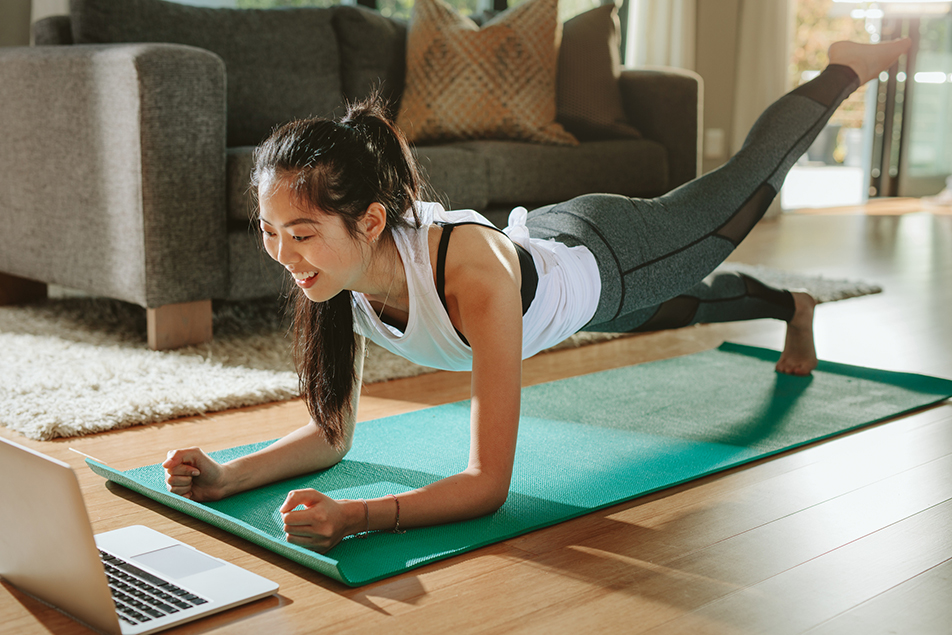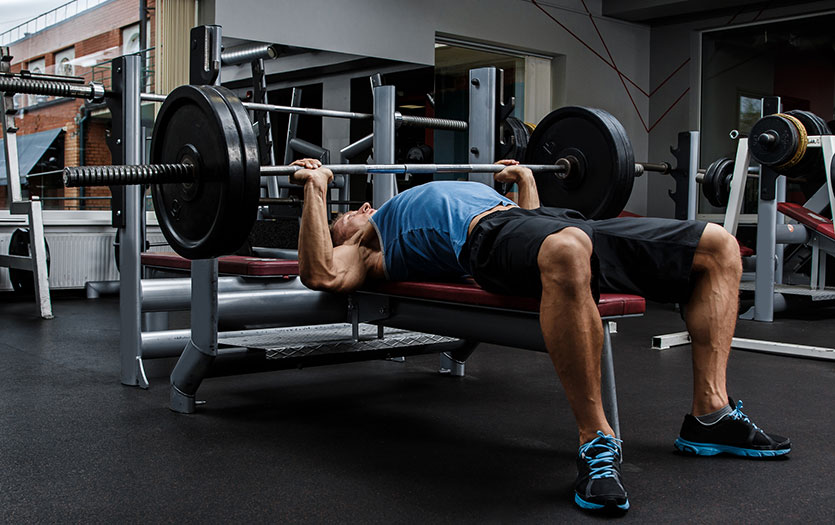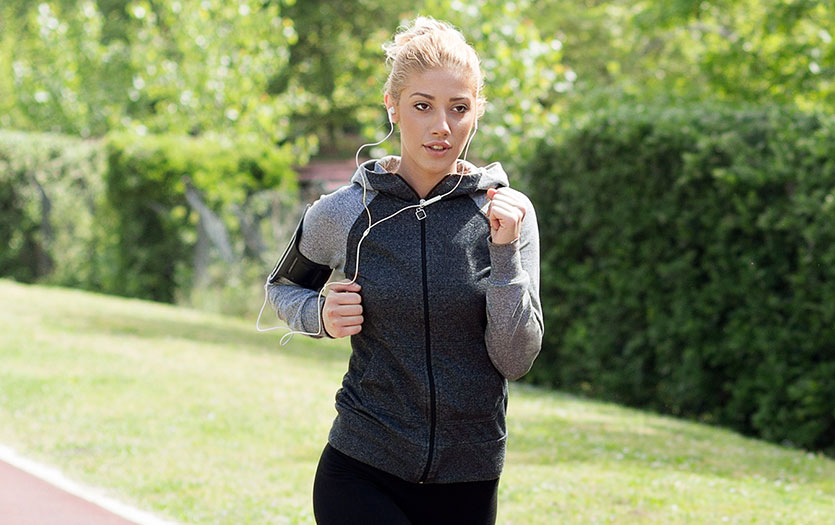
This post was written by Scott Charland, MA, CSCS, SCCC, manager of human performance, Zach Nagel, CSCS, ATC, performance specialist, and Tyler Palmer, MA, CSCS, USAW, performance specialist, Parkview Sports Medicine.
As the pandemic progresses, many businesses have closed, forcing people to find new and inventive ways to go about their normal routines, including exercise. While your favorite fitness center is closed it may seem easy to simply give up, but this is not the time to quit working out. Instead, with a little creativity and ingenuity, you can continue a rewarding routine at home. If you stick with it, you can pick up right where you left off once your gym reopens. Let’s take a closer look at the different ways you can set up an effective workout space in your home and the benefits of staying active.
Setting up your home gym
When you’re considering the setup of your home workout space, you need to consider and answer the following questions:
- Questions No. 1 – What are my training goals? Thinking about your goals will help you determine how much space and equipment (if any) you’ll need. In times like these, many are looking for a solution to match the routine they are accustomed to at their gym, but their current environment might lead to limitations. This is where creativity comes into play. Taking the time to determine a list of wants and needs for your home workout space can help define what is a limitation and what is a luxury.
- Question No. 2 – How much space do I have and what’s the best location? Most people set up their home gyms in a basement or garage, but not everyone has these. Often, the spaces that don’t seem like an obvious choice are great areas to utilize as a home gym. Look around your home. Spaces that provide the largest open floor space, such as living rooms, home offices, guest bedrooms, front porches, patios/decks, driveways and backyards can serve as effective workout spaces.
In most cases, the minimum space needed to exercise would be about 1.5 times your height or between 8-10 square feet. Remember, small furniture can always be moved, and spare beds can be disassembled. Wherever the space, the floor or exercise surface should be smooth and free from holes or potential tripping hazards. A carpeted floor provides enough cushion for shock absorption during higher-impact activities. If you’ll be working out in your garage, driveway or deck, consider buying a foam flooring system to work out on. These systems are relatively inexpensive and can easily be moved. - Question No. 3 – What equipment do I have/need? For many, this is a television, laptop or tablet for streaming workouts. For others, it’s making room for machines or equipment like an exercise bike, treadmill, elliptical, squat rack, or barbell and free weights. You don’t have to run out and purchase a big machine. There are plenty of other options. Go online and order a few sets of dumbbells or suspension trainers to hang over a bedroom door to increase the intensity of bodyweight exercises. A bike training stand could also be an option. Mount your conventional bicycle and use it as a substitute for a traditional exercise bike or treadmill catering for great aerobic workouts.
Don’t be afraid to improvise
If you don’t currently own or can’t afford new equipment, that’s OK too. Your home may not have all the same bells and whistles as a gym, but there are several creative solutions to help you stay on track. Try a few of these suggestions during your next workout:
- Body basics: The best resistance training tool you have in your arsenal is your own body. From squats and lunges to push-ups and crunches, there is an unlimited number of exercises you can do by simply utilizing your body weight.
- Reinvent resistance: If you’re needing or want to add some resistance, try filling up a backpack with some books or soup cans to increase the difficulty. Soup cans are also handy for bicep curls, triceps extensions and shoulder exercises. For even more resistance, try filling up an empty milk jug with water. It should weigh approximately eight pounds. You could also use a container of laundry detergent. But if that’s still not enough, try filling up a reusable grocery bag with 2-3 gallon jugs. This will provide you with some serious resistance.
- Furniture fix: A sturdy chair can be a great tool. There are many step-up variations you could try with a chair, as well as triceps dips, rear-foot-elevated split squats and incline push-ups.
Benefits of exercising at home
The benefits of exercise extend well beyond just the physical transformation that can occur. During this unique time, we’re all experiencing new situations, including environmental constraints, increased stress, anxiety, isolation and a massive change in our day-to-day routines. Fortunately, exercise can provide us with some consistency and a considerable boost in mood and energy levels.
Since many of us are confined to our homes for an indeterminate amount of time, we’re all probably sitting down more than normal. Therefore, it’s crucial, now more than ever, that we do everything we can to keep ourselves in motion. With so much free time, it’s important that we not become paralyzed by all the time available to us. Creating a routine and scheduling daily activities is a great way to regain momentum and bring some semblance of order back to our lives.
The best way to do this? Don’t look at exercise as something you “have” to do. Instead, create a positive light around exercise: “I exercise because it decreases my stress, allows me to be more productive on work and elevates my mood.” Whatever the reason, it’s important to create positive associations with exercise.
Also, utilizing an identity-based approach instead of an outcome-based approach has been shown to provide lasting change. When we use an outcome-based approach we are likely to get discouraged if we do not see the changes we expected as soon as we expect them. But an identity-based approach will lead us to behavior and lifestyle changes that will allow us to hit our goals. Remember to start small with easily achievable goals that will help establish the habit, routine and identity of someone who exercises. This can be as easy as taking a two-minute walk or doing some form of exercise for two minutes. As you progress and this becomes a part of who you are, you can begin expanding your physical activity and workouts. Remember, it comes down to creativity and consistency to accomplish and maintain your fitness goals. If you have space to move, inside or outside, then you have an opportunity to exercise.
Work out with us!
With local gyms being closed, we’ve decided to put together a combination of workouts you can do at home. These workouts will target all muscle groups and are designed to elevate your heart rate. Whether you're a beginner or a seasoned athlete, you can scale many of these exercises to match your activity level. Here's how to do them:
- 3 combo workouts = 1 total workout
- 3 sets of each exercise = 1 combo workout
- 1x through each exercise = 1 set
- No rest in between exercises
- :60 rest between each set
The easiest way to perform these workouts is by going through each video in the playlist three times. Then you'll have a full workout!
Coming soon!
We’ll be launching live workouts and would love for you to join us! Follow us on Facebook for more information and updates.



